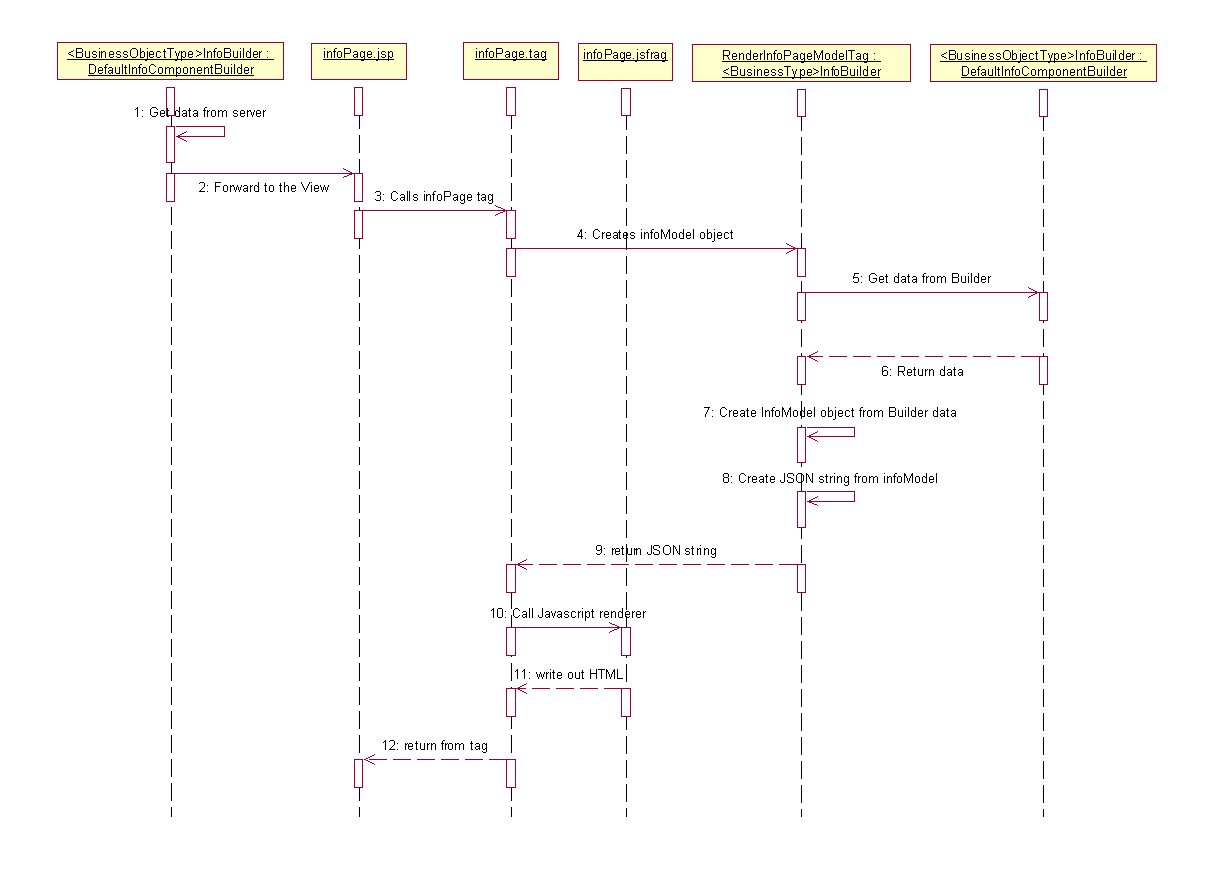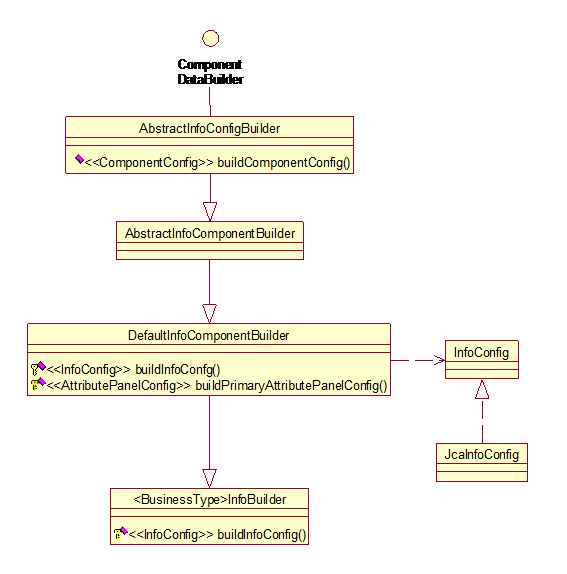
|
Element
|
Type
|
Description
|
|
DefaultInfoComponentBuilder.java
|
Java class
|
The default builder that all other information page builders should extend from. The builder is responsible for gathering the required data from the server.
|
|
Element
|
Type
|
Description
|
|
infoPage.jsp
|
JSP
|
The JSP that all information page actions should invoke. It calls begin.jspf/end.jspf and calls the infoPage tag in the MVC taglib.
|
|
infoPage.tag
|
Tag , defined in the MVC taglib
|
Sets up the JSP context and creates the info page ComponentDefinition object. It calls the renderInfoPageModel tag in the components taglib and calls the JavaScript renderer to generate the HTML for the information page.
|
|
RenderInfoPageModelTag.java
|
Java tag, defined in the components taglib
|
It constructs a JSON object (a.k.a. InfoModel) from the data in the builder and writes out the JSON object to its print stream.
|
|
infoPage.jsfrag
|
JavaScript fragment
|
JavaScript renderer that takes in the JSON InfoModel object. It generates the HTML for the information page
|
|
myTab.jsfrag
|
JavaScript fragment
|
Renders the top-level tabs and provides the ability to move items around in the tab content area.
|
|
Element
|
Type
|
Description
|
|
attributePanel.jsp
|
JSP
|
JSP to invoke to render an Attributes Panel. The Attribute Panel component is used to display the “Attributes” and “Visualization and Attributes” widgets. The layout of the attributes in an Attribute Panel is controlled by the attribute layout manager in the Type and Attribute Management utility. See Attribute Panels for more information.
|
|
attributePanel.tag
|
Tag , defined in the MVC taglib
|
Sets up the JSP context and creates the Attribute Panel ComponentDefinition object. It calls the renderAttributePanel tag in the components taglib and calls the JavaScript renderer to generate the HTML for the attribute panel.
|
|
RenderAttributePanelTag.java
|
Java tag, defined in the components taglib
|
It constructs a JSON object (a.k.a. InfoModel) from the data in the builder and writes out the JSON object to its print stream.
|
|
attributePanel.jsfrag
|
JavaScript fragment
|
JavaScript render that takes in the JSON InfoModel object. It generates the HTML for the attribute panel.
|

